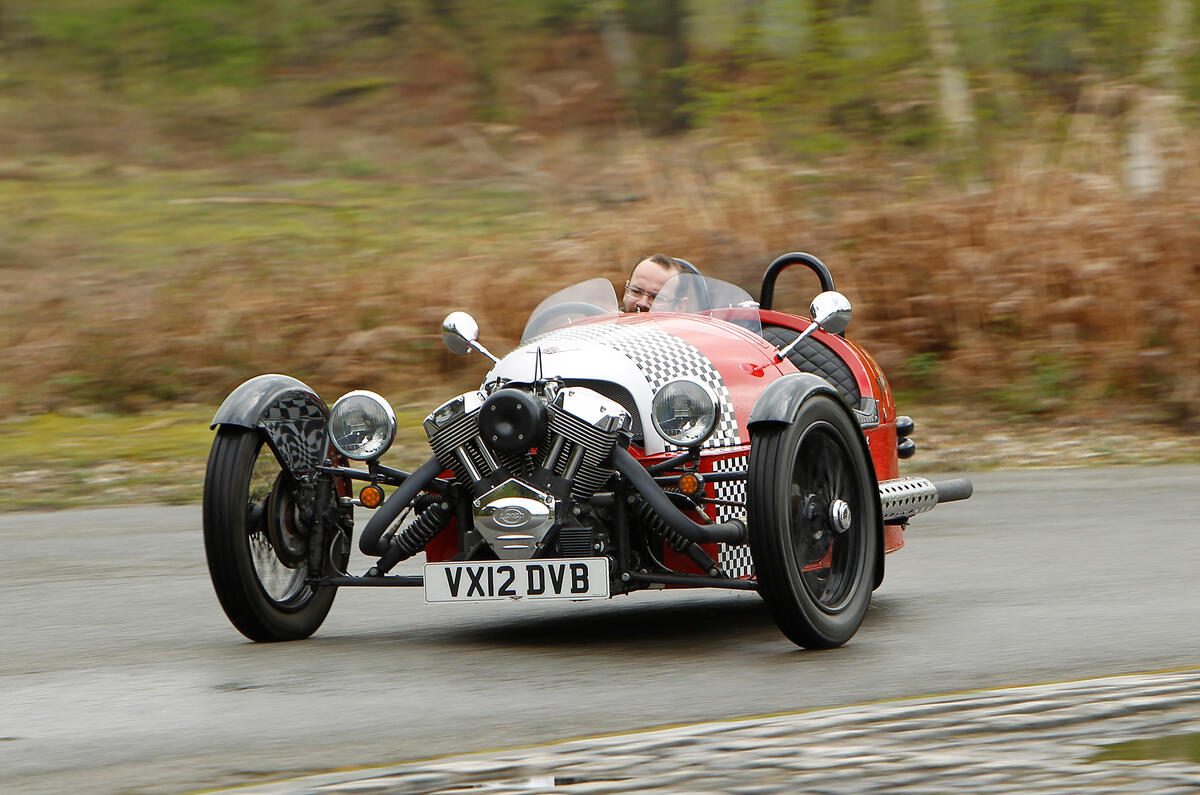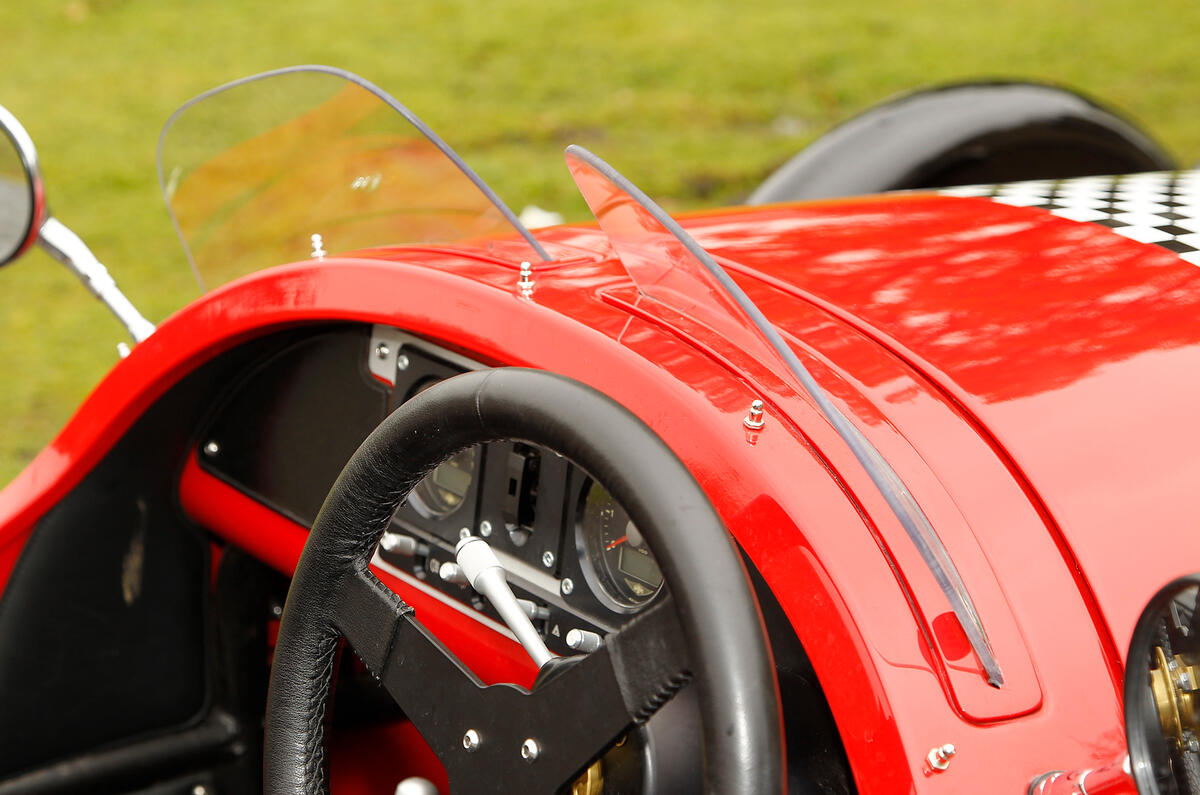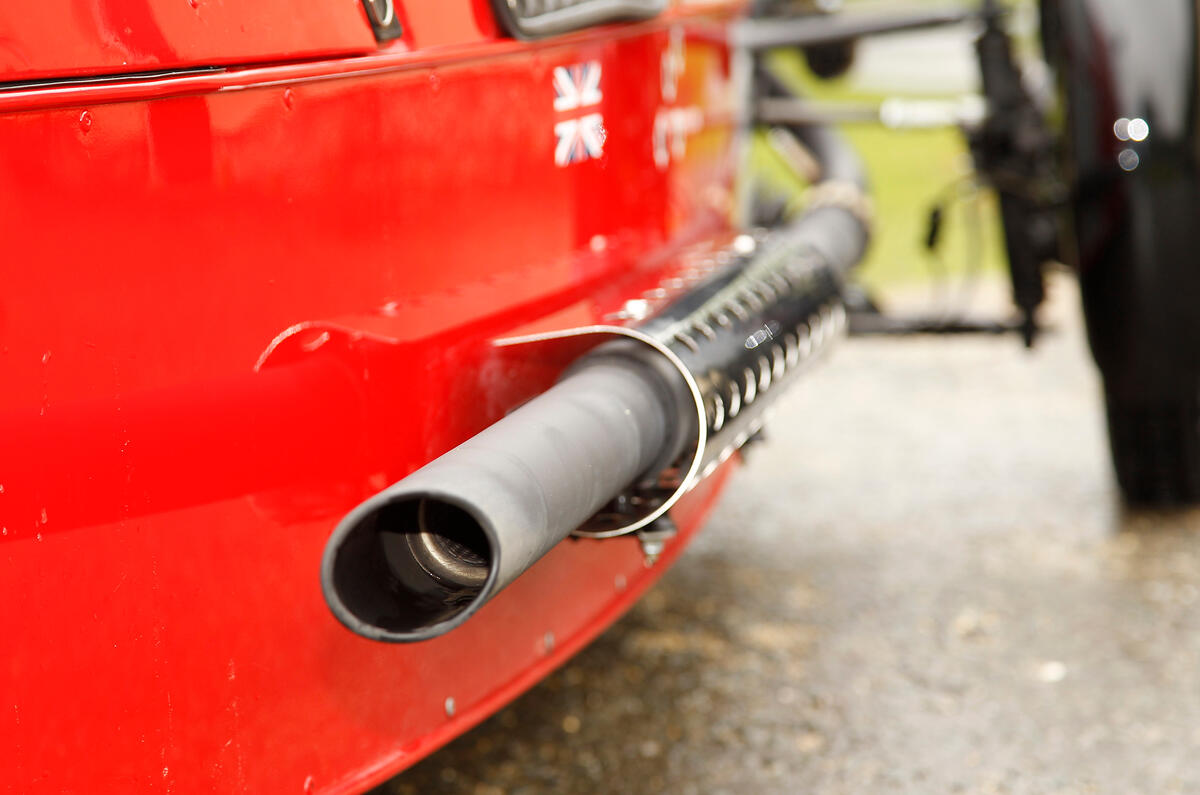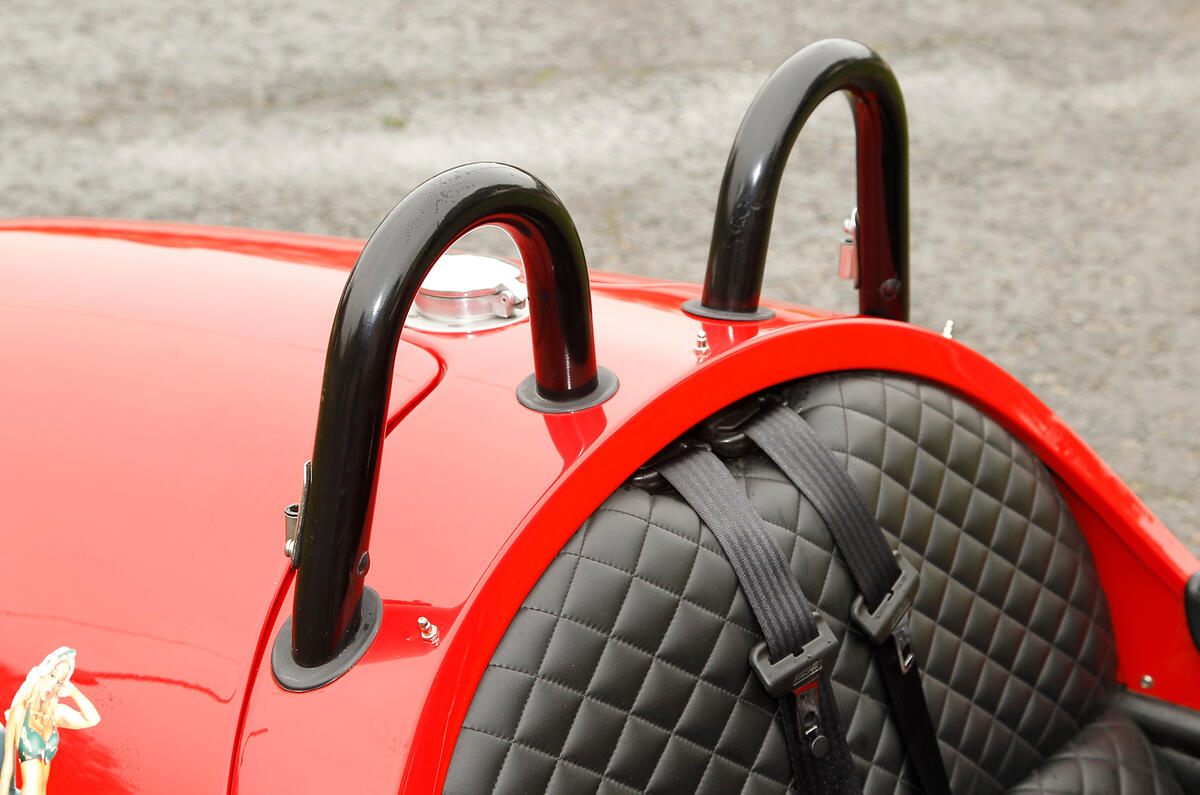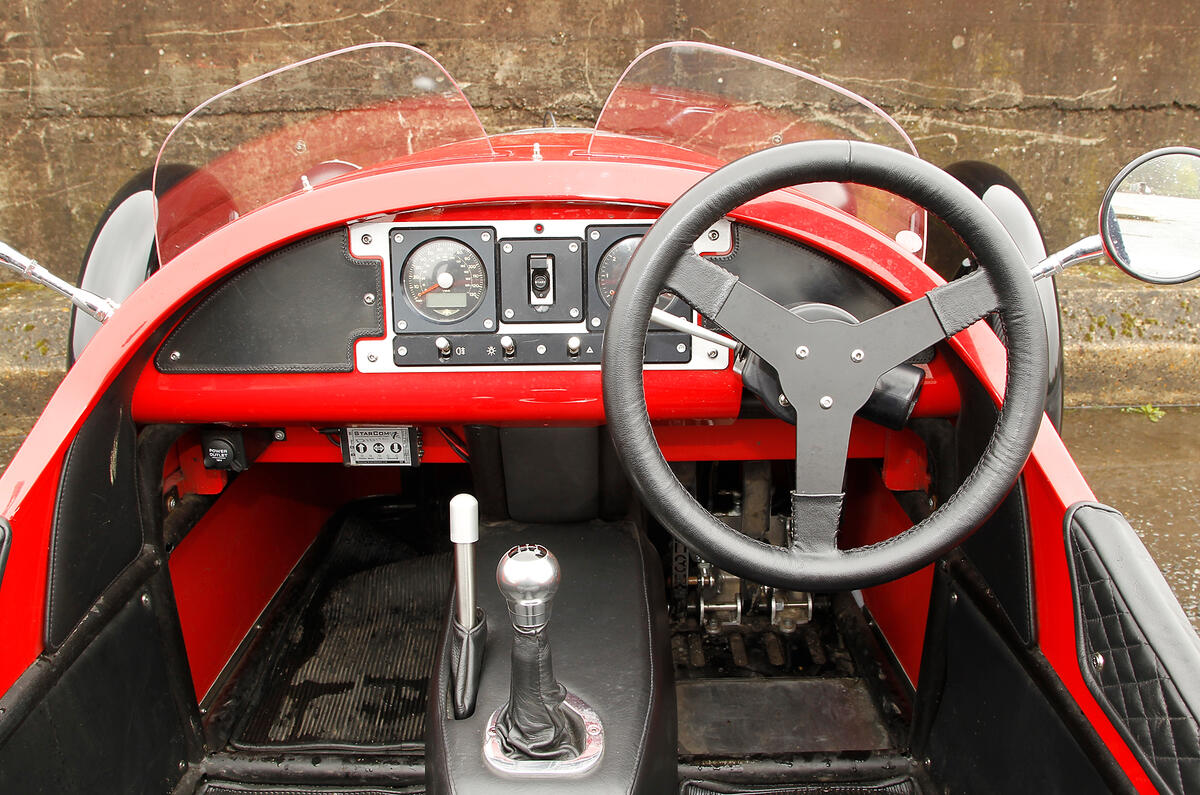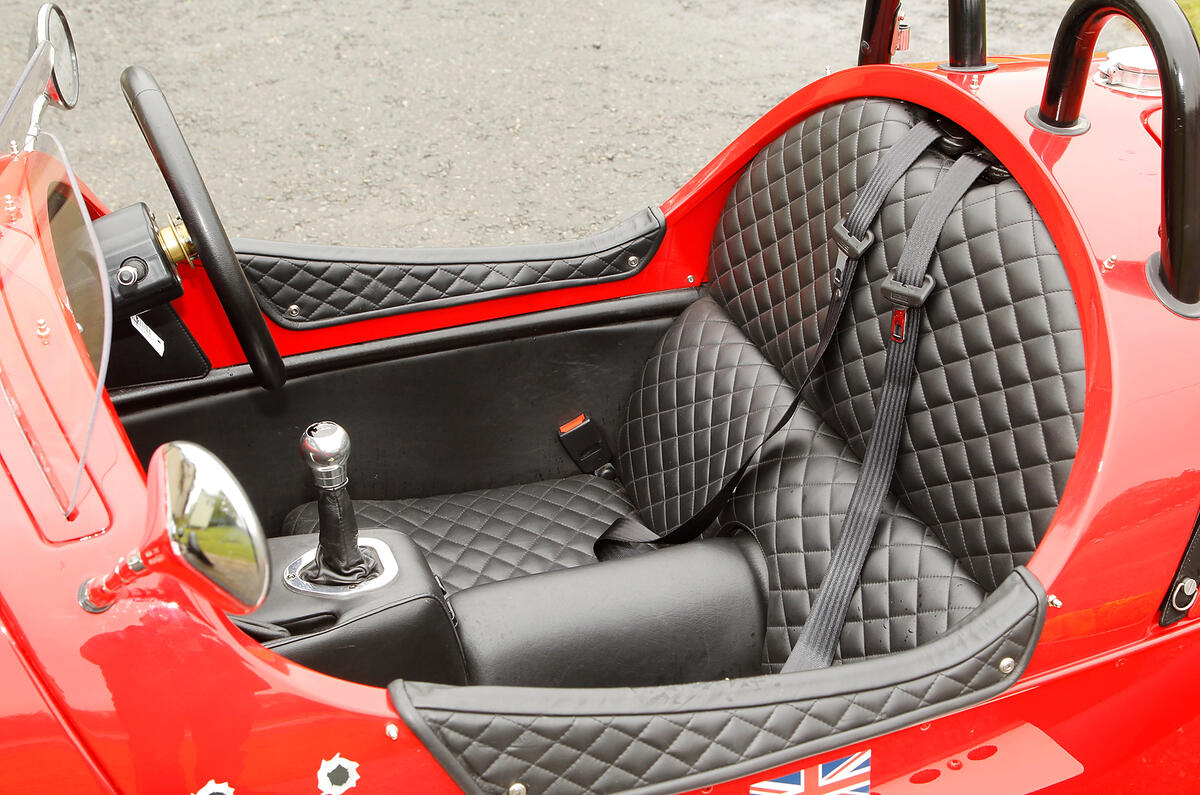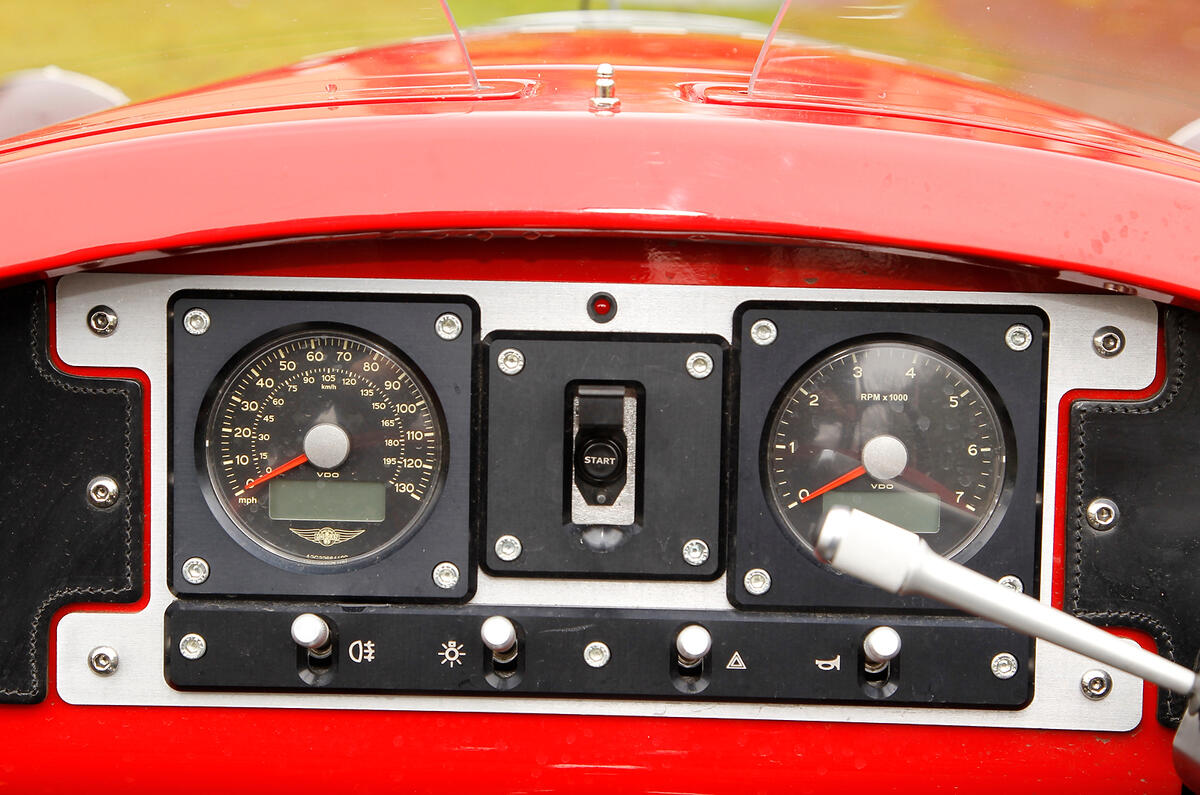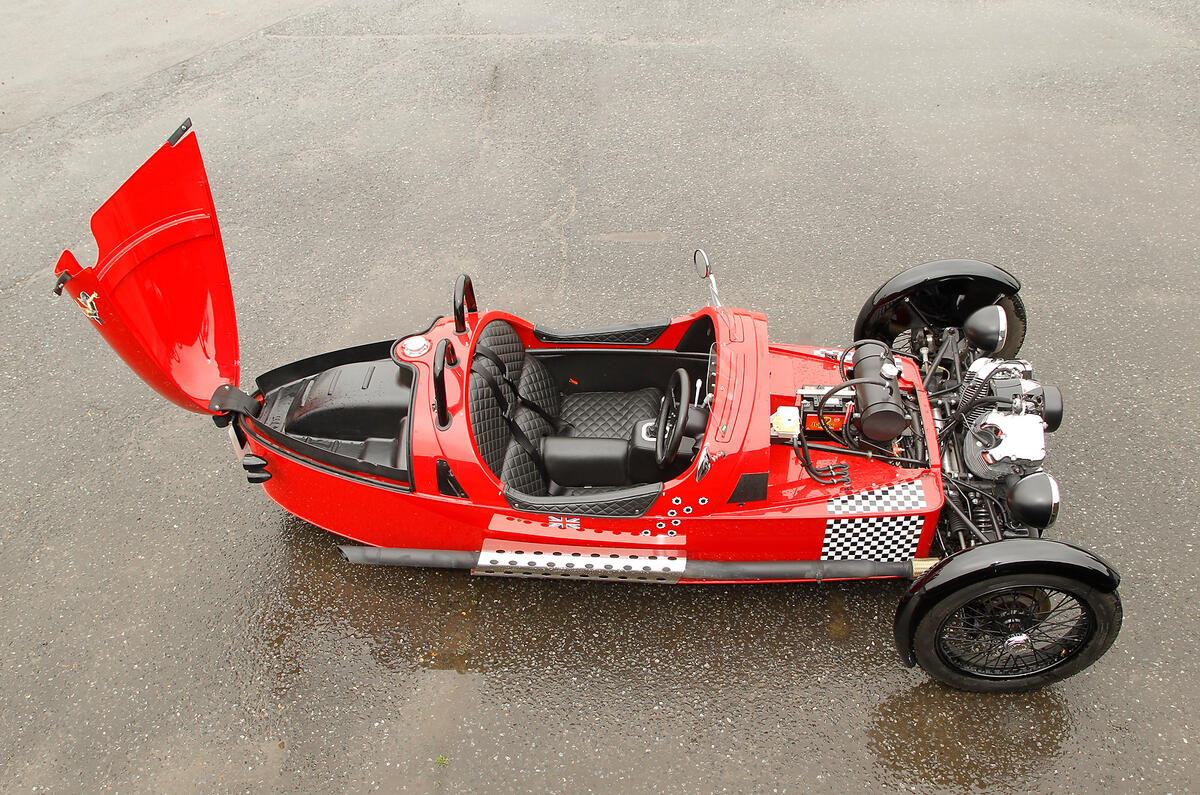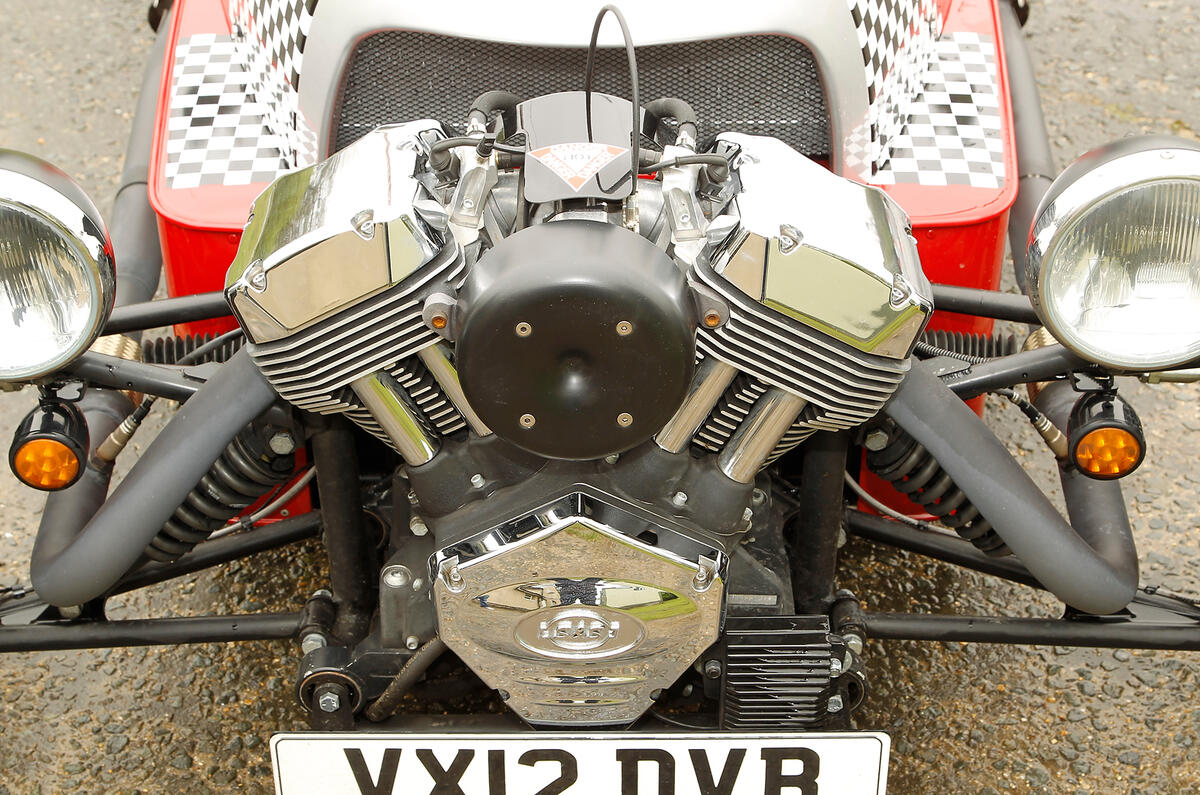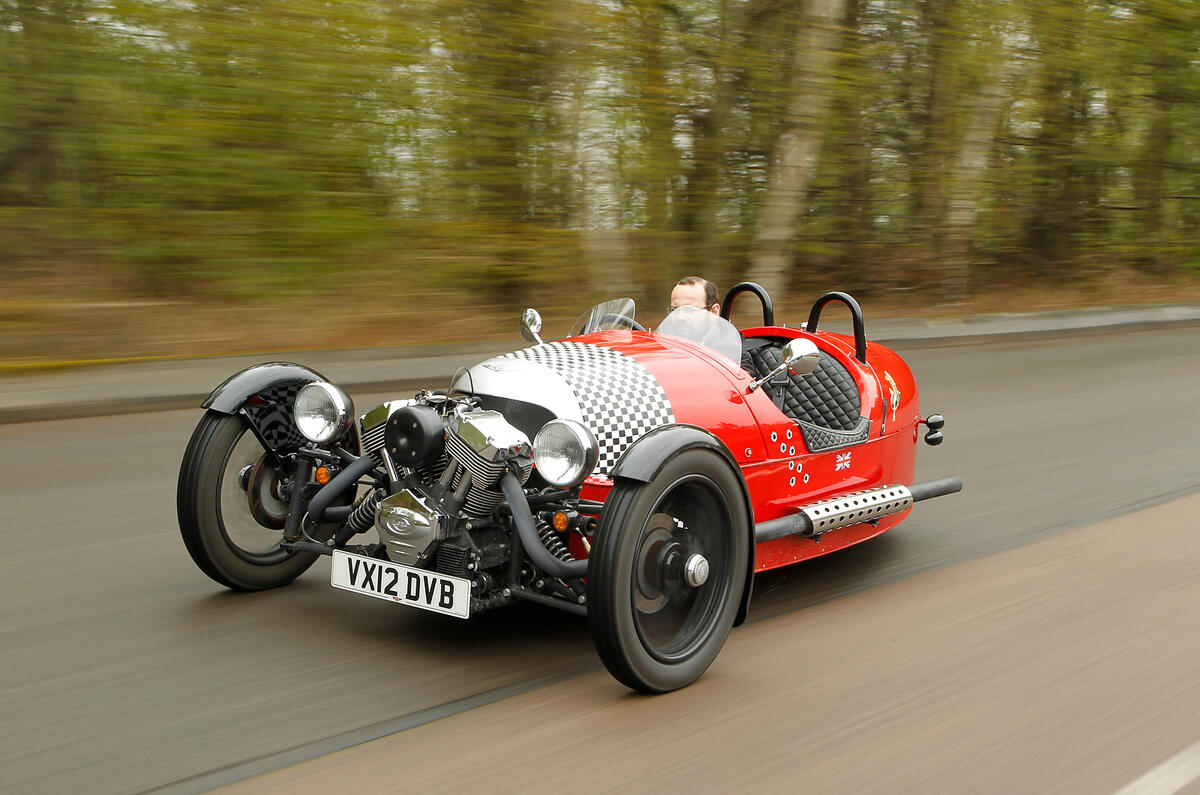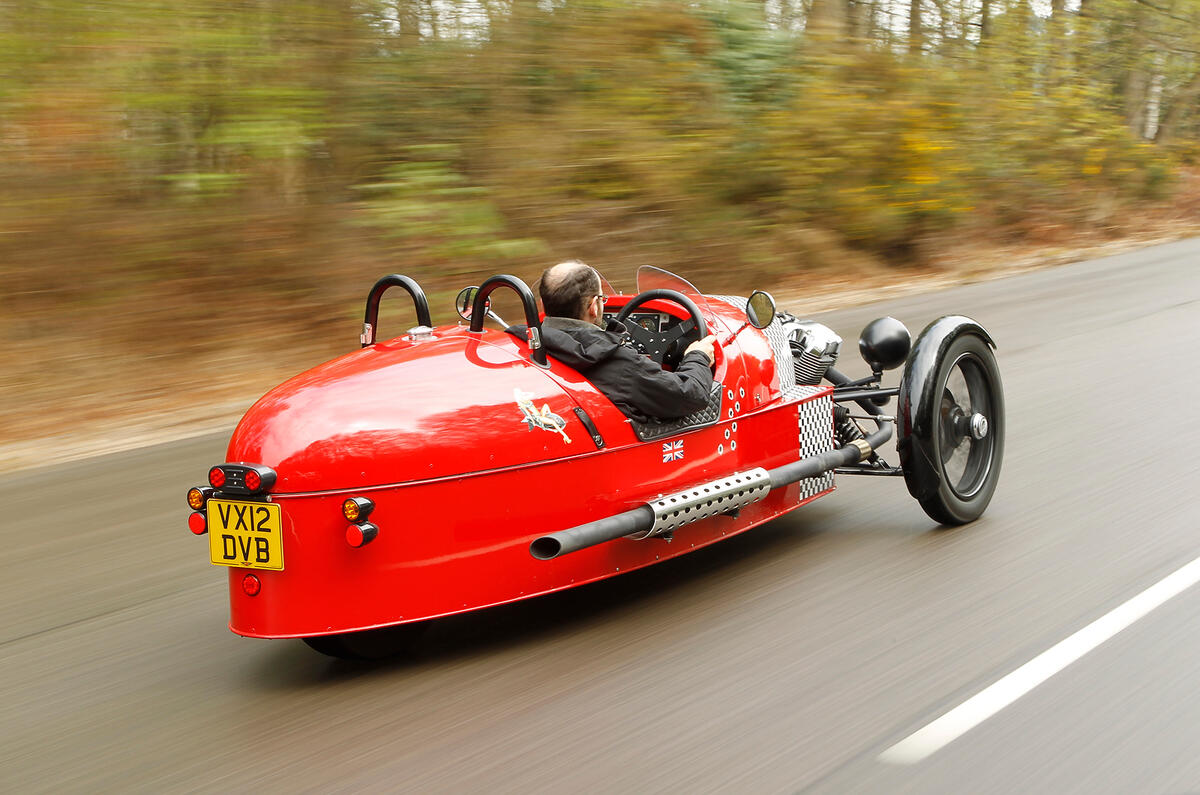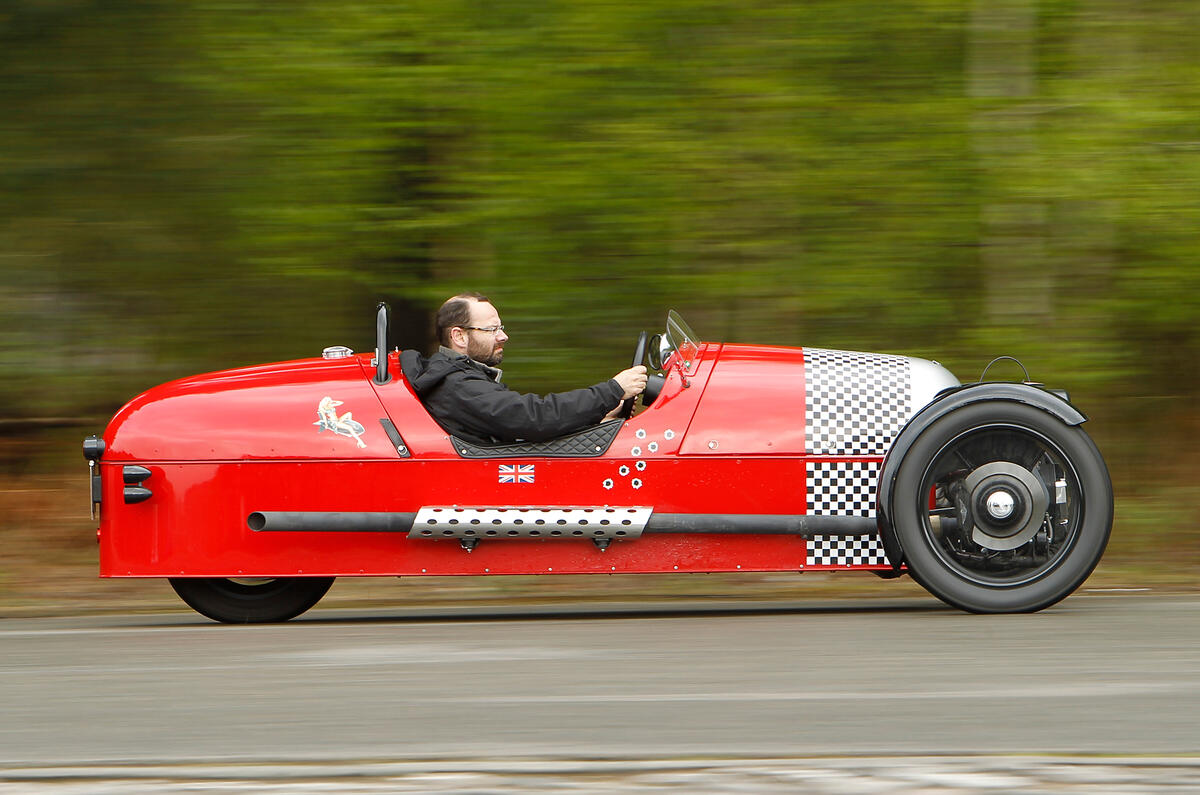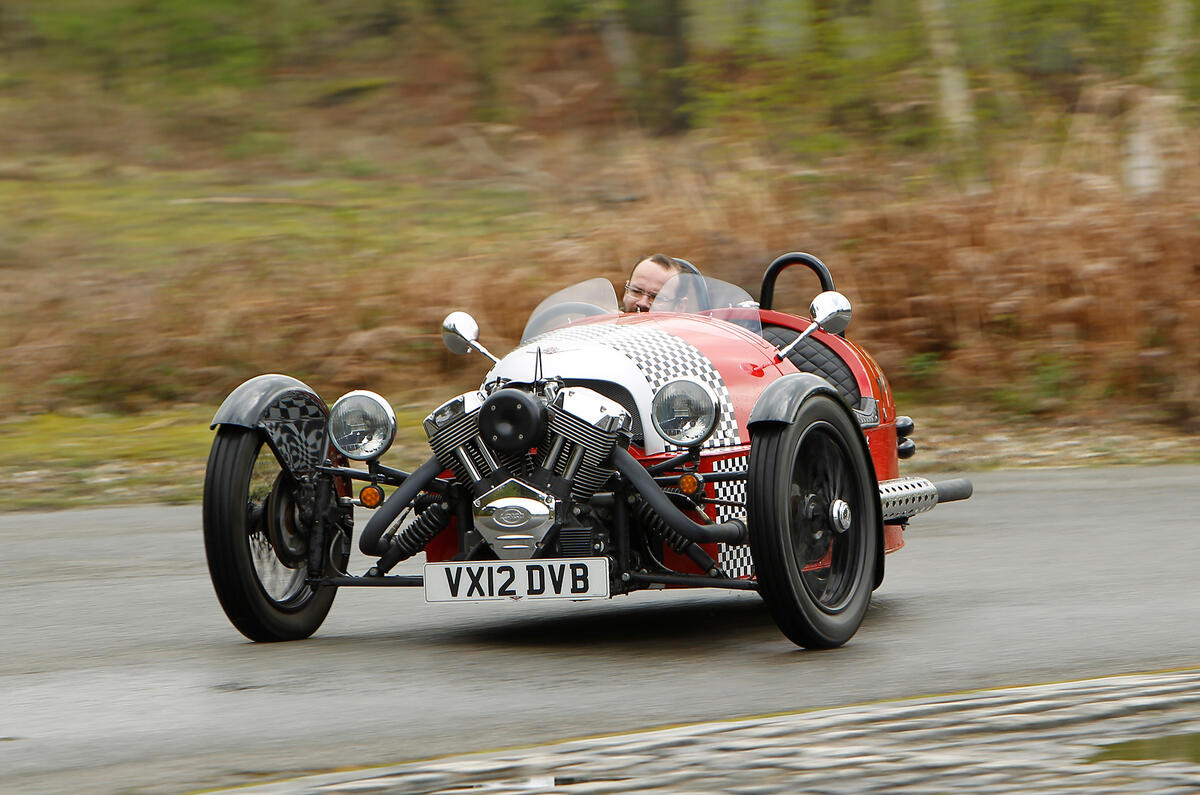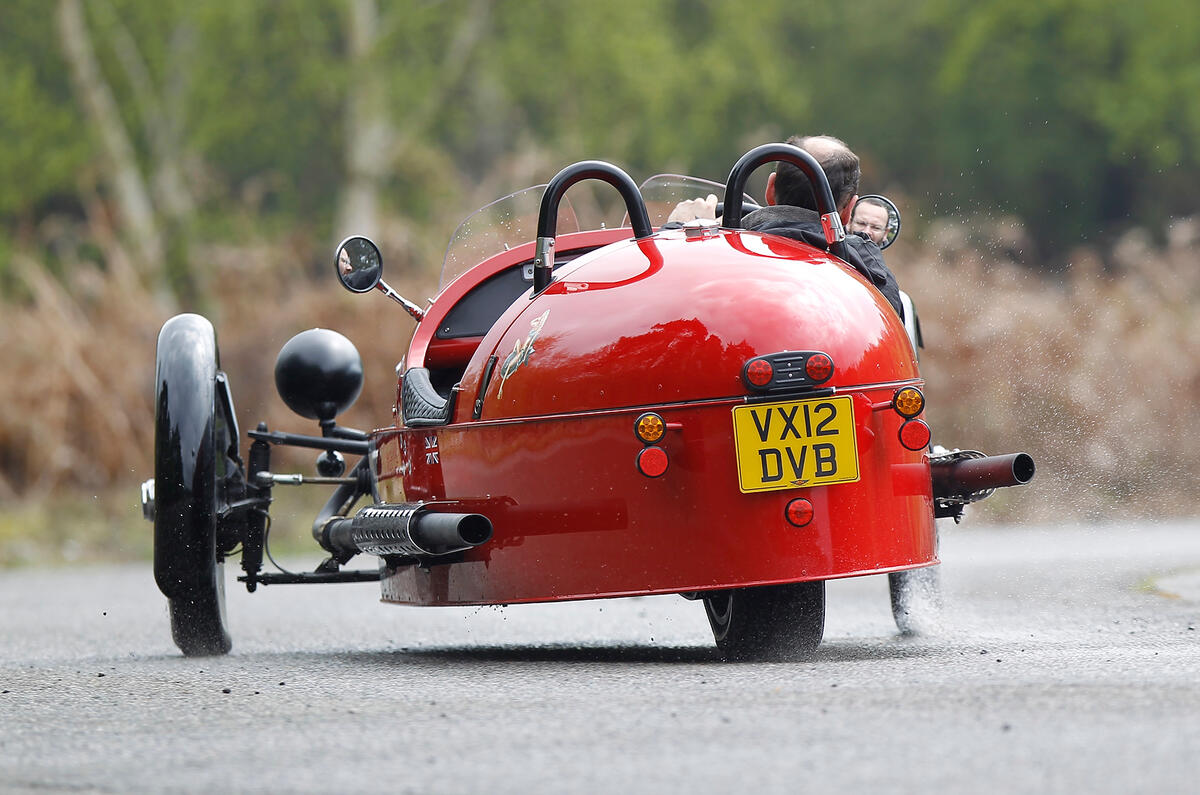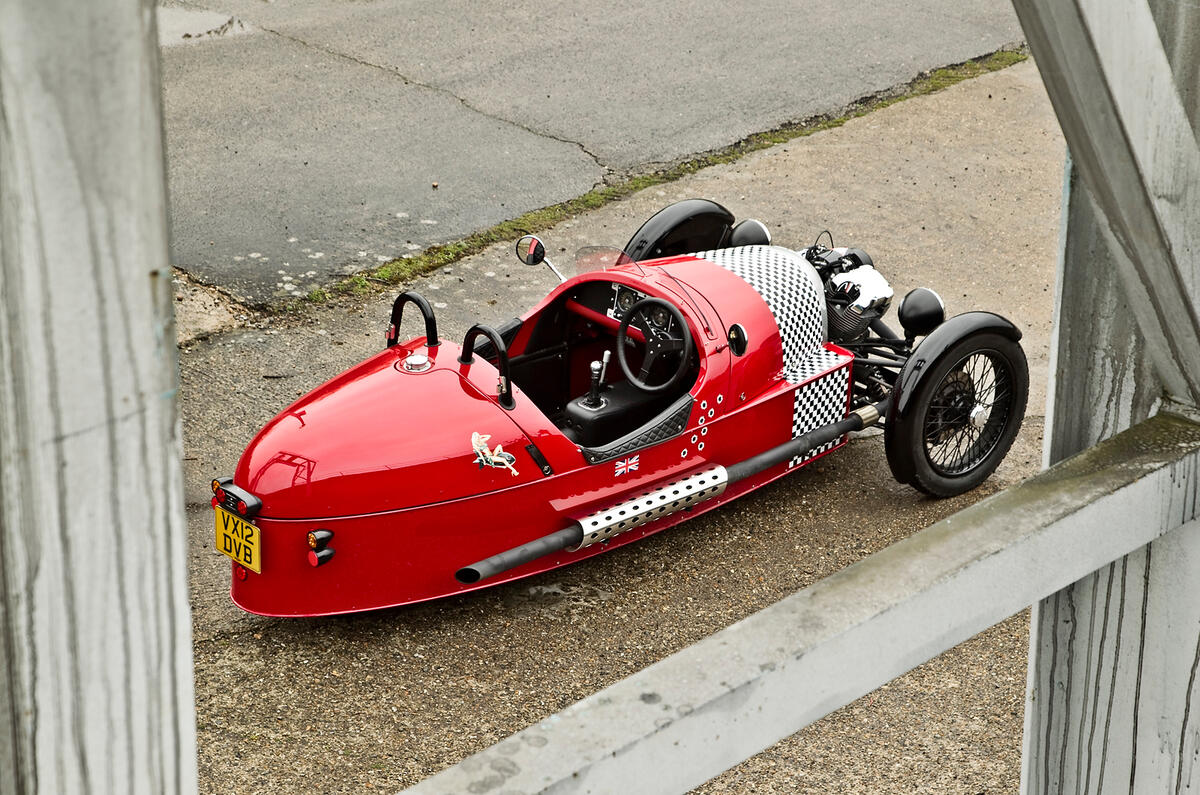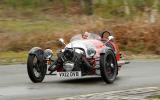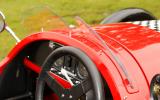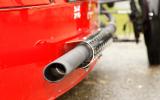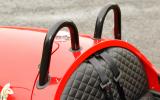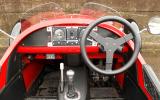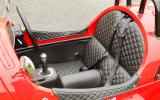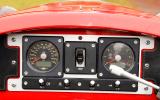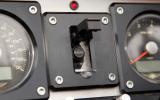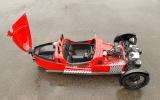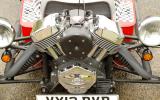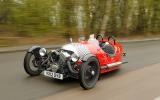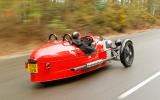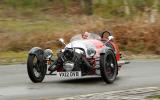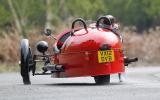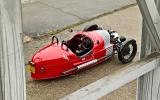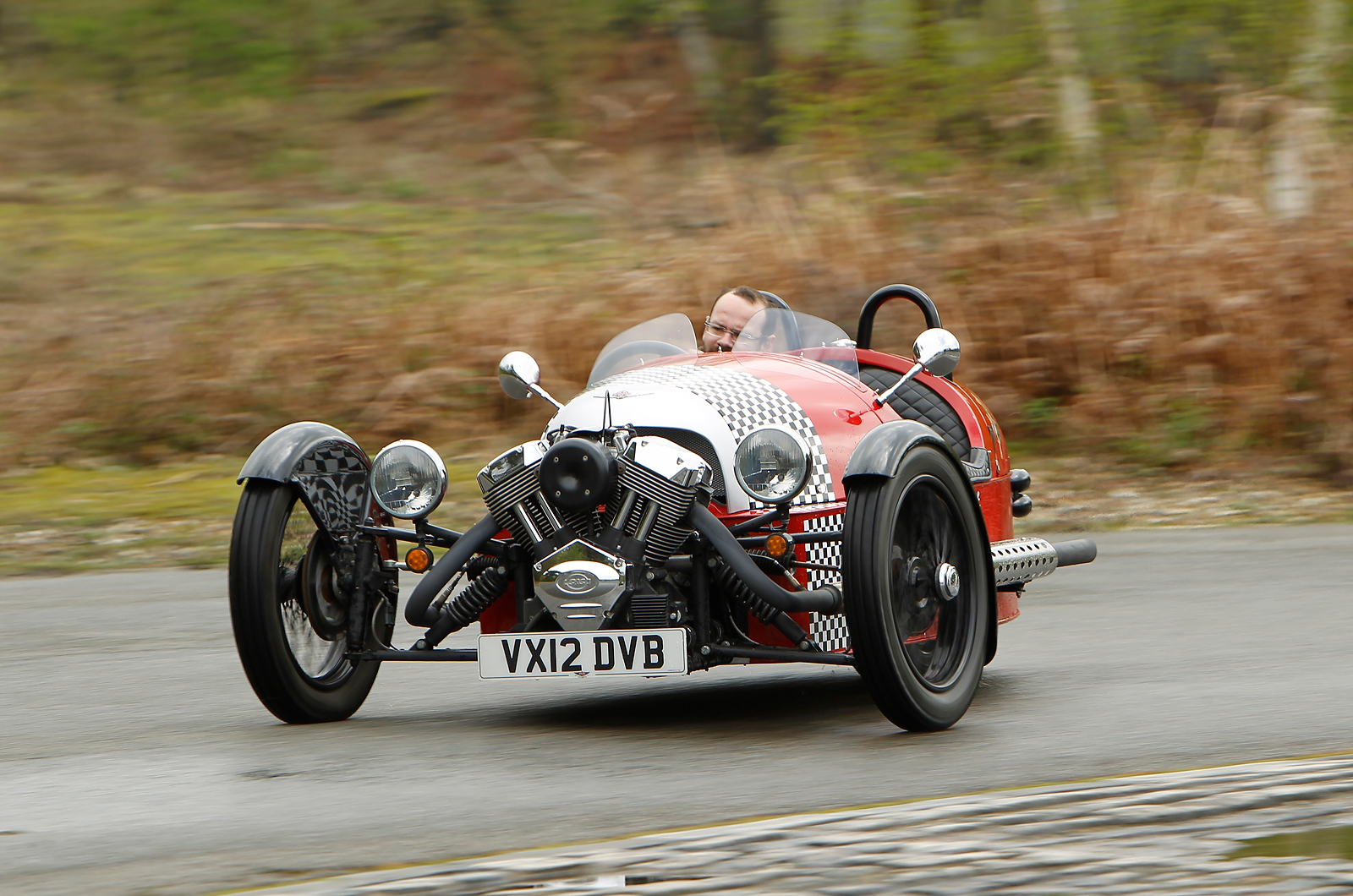Early Morgan three-wheelers looked little like the latest 3 Wheeler. It wasn’t until the Super Aero of 1927 that it began to take on the shape we today recognise as that of the classic Morgan: low slung to aid grip, handling and, crucially, stability. And compared with the earliest cars, it’s relatively aerodynamic, too.
So from the late 1920s onwards that’s how the sportiest Morgan three-wheelers looked, and that’s the basic design that has been mimicked today. To call it retro somehow doesn’t seem right. It isn’t a pastiche of the original like, say, a Fiat 500 or the latest Minis. Instead, it just follows the original formula: a steel tubular chassis, some ash framework and an aluminium body. It’s pure, honest, authentic and real.
In the same vein, the engineering beneath – and in front of – the Morgan’s nod to styling isn’t a pastiche, either. Morgan has taken what it believes to be the best V-twin for the job. Now, as then, it’s a motorcycle engine. But now, unlike then, it’s made by American engine maker S&S.
S&S started out tuning Harley-Davidson motors, but after a time, as such companies do if they’ve got the nous, it began making entire engines. Today, if you buy a complete S&S motor, it’ll have the same pushrod V-twin layout as a Harley unit, but none of the internal components will necessarily come from Harley.
This one is pure S&S, and built to a unique Morgan specification. It’s a lazy, old-fashioned motor, square of cylinder dimensions and with two overhead valves per cylinder, operated by pushrods. As a result, it makes a leisurely 82bhp, combined with a healthy 103lb ft of torque, peaking at just 3250rpm – a grunty set of stats for a bike motor.
That’s mated to an MX-5 gearbox via a transitional case that contains a damper necessary to smooth the big V-twin’s otherwise peaky torque output. From the ’box there’s a bevel gear to change the direction of rotation, then a belt driving the single back wheel, which is suspended by a trailing arm. Front suspension is by wishbones, and there are coil springs all round – and no driving aids.
The EV3 is a different kette of fish, with the motorbike engine and manual gearbox removed and an electric motor and battery pack added. While other details remain sketchy at best, Morgan claims that its performance will be comparable to the conventional petrol version and have an operational range of 150 miles.



